Eclipse
A versatile device offering auditory evoked potentials (AEP), auditory steady state response (ASSR), vestibular evoked myogenic potentials (VEMP) and otoacoustic emissions (OAE). Designed to fit seamlessly into your workflow and offers complete reliability and perfect results.
Design your own diagnostic solution for a perfect result
-
Solid and noise immune hardware
-
Modular platform
- Unique pre-amplifier technology ensures optimum performance in electrically hostile environments
- Intuitive interfaces, well-designed layouts, freedom to customize settings
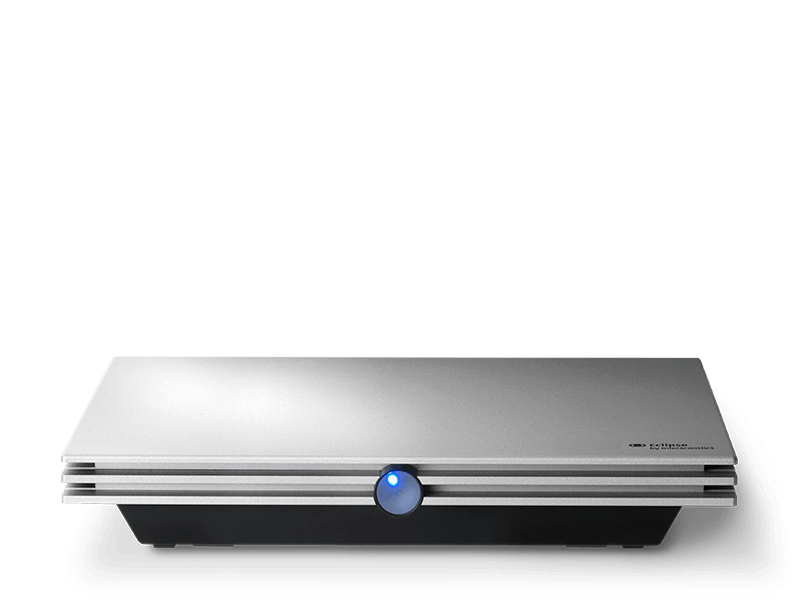
Have it your way
We all strive towards a common goal: To achieve reliable test results to screen or diagnose patients accurately and efficiently.
Whatever your challenge may be, the Eclipse hardware platform enables you to focus on the job at hand with the assistance of dedicated software modules for all facets of auditory evoked potentials and otoacoustic emissions.
Making complicated things easy
A range of pre-loaded test protocols are available in each software module ensuring that you will quickly feel confident. After getting acquainted with the software you can add or modify test protocols and tailor them to your specific needs.
The clear layouts allow you to easily interpret the results and focus on the essential outcomes of the test, which can be saved into OtoAccess® Database for easy retrieval, review and export to your EMR in XML format.
Auditory evoked potentials
Knowing when to stop
Save valuable time
Fmp – improving confidence
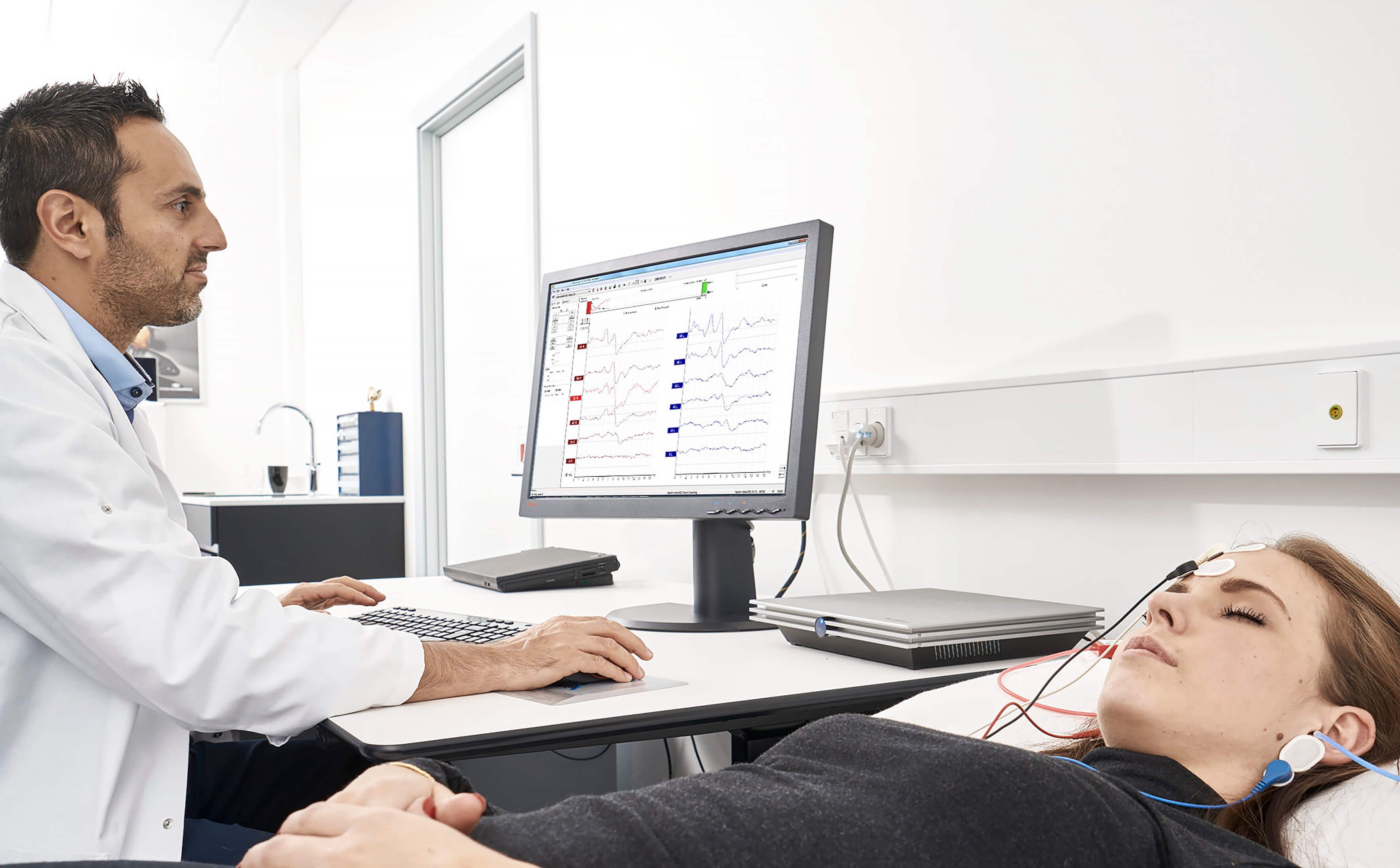
Double your response amplitudes
The revolutionary CE-Chirp® stimulus family for threshold assessment (developed by Claus Elberling) compensates for frequency specific cochlear travel times and generates waveform responses up to twice the size of traditional click or tone burst stimuli.
The original CE-Chirp® was designed for optimal response amplitude at medium stimulation intensities. By using the level specific CE-Chirp®, clearer waveform morphology at high intensities is also available. The introduction of the CE-Chirp® LS stimulus family is an overall improvement to the original CE-Chirp® stimulus family.
For an easier visual evaluation of the NB CE-Chirp® responses, each of the NB CE-Chirp® stimuli have been time shifted to provide latencies similar to Click and the CE-Chirp® LS stimulus. The time-shifted NB CE-Chirp® are named NB CE-Chirp® LS, as the placements are level specific. Otherwise, the NB CE-Chirp® LS are identical to the original NB CE-Chirp®.
The CE-Chirp® stimulus family is incorporated in the EP25 (*optional for EP15) and ASSR software modules from Interacoustics.
CE-Chirp® stimulus family - the gold standard for threshold assessment
From screening ABR to specialized AEP
EP15: Diagnostic ABR
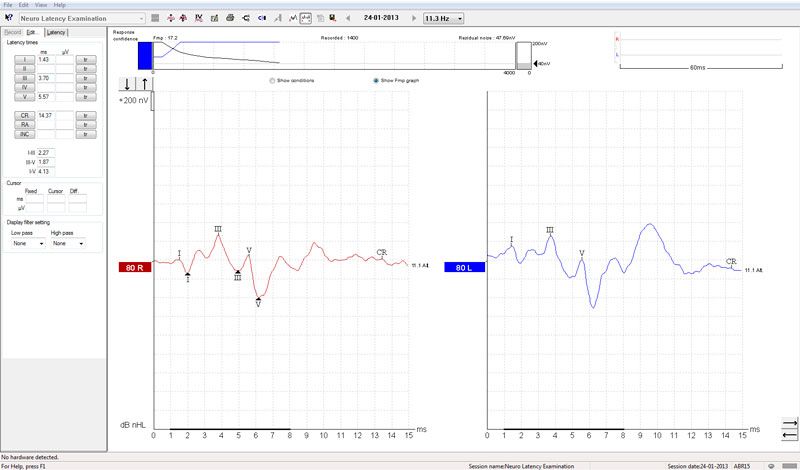
A new standard
-
Threshold & neurological ABR testing & eABR
- Bayesian weighting
- Residual noise calculator
- Fmp calculator
- SNR 3:1 ratio calculator CR, RA, INC waveform markers
- Normative latency data for click, CEChirp®, NB CE-Chirp®, CE-Chirp® LS & NB CE-Chirp® LS
- Single/split screen
- CE-Chirp®, NB CE-Chirp®, CE-Chirp® LS & NB CE-Chirp® LS for optimized threshold assessment (optional)
-
Cochlear microphonic & ECochG testing (optional)
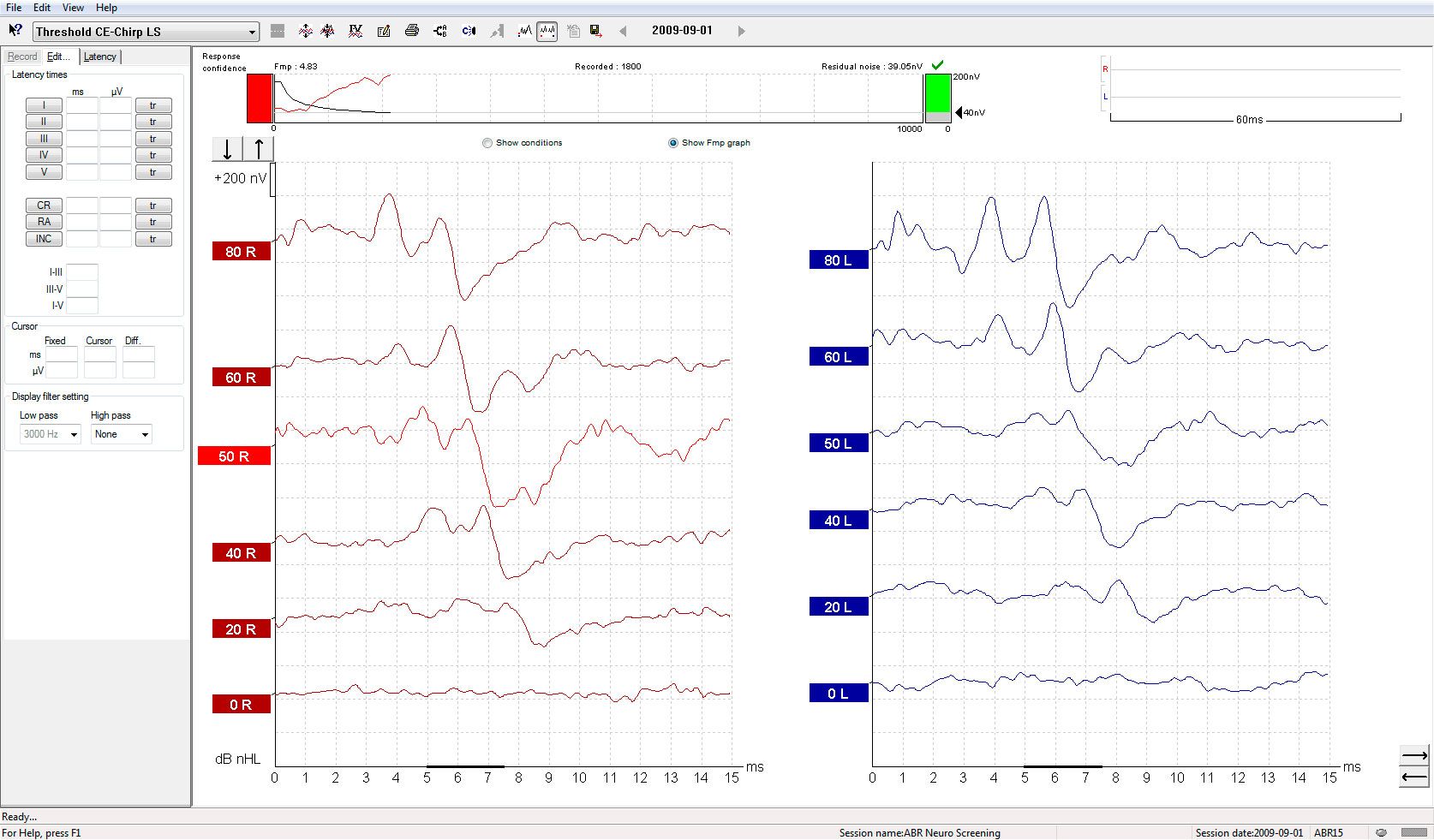
EP25: Clinical AEP
The benefits of specialized features
- All the features of EP15
-
Cochlear microphonic & ECochG testing
- ECochG Area Ratio Calculation by John Ferraro
- CE-Chirp®, NB CE-Chirp®, CE-Chirp® LS & NB CE-Chirp® LS for optimized threshold assessment
- Research module including waveform export, logging of recordings, and importing WAV files for stimuli (optional)
ABRIS Fast and objective ABR screening
Just click “START”
Aided Cortical module:
Aided benefit made clear
Traditional hearing testing is not possible in infants and in patients with complex needs, leaving a big question mark on the benefit of a fitted hearing device. Until now.
The Aided Cortical module for the Eclipse offers an objective method to validate the benefit of a fitted hearing aid or cochlear implant in patients who cannot subjectively respond to a hearing test.
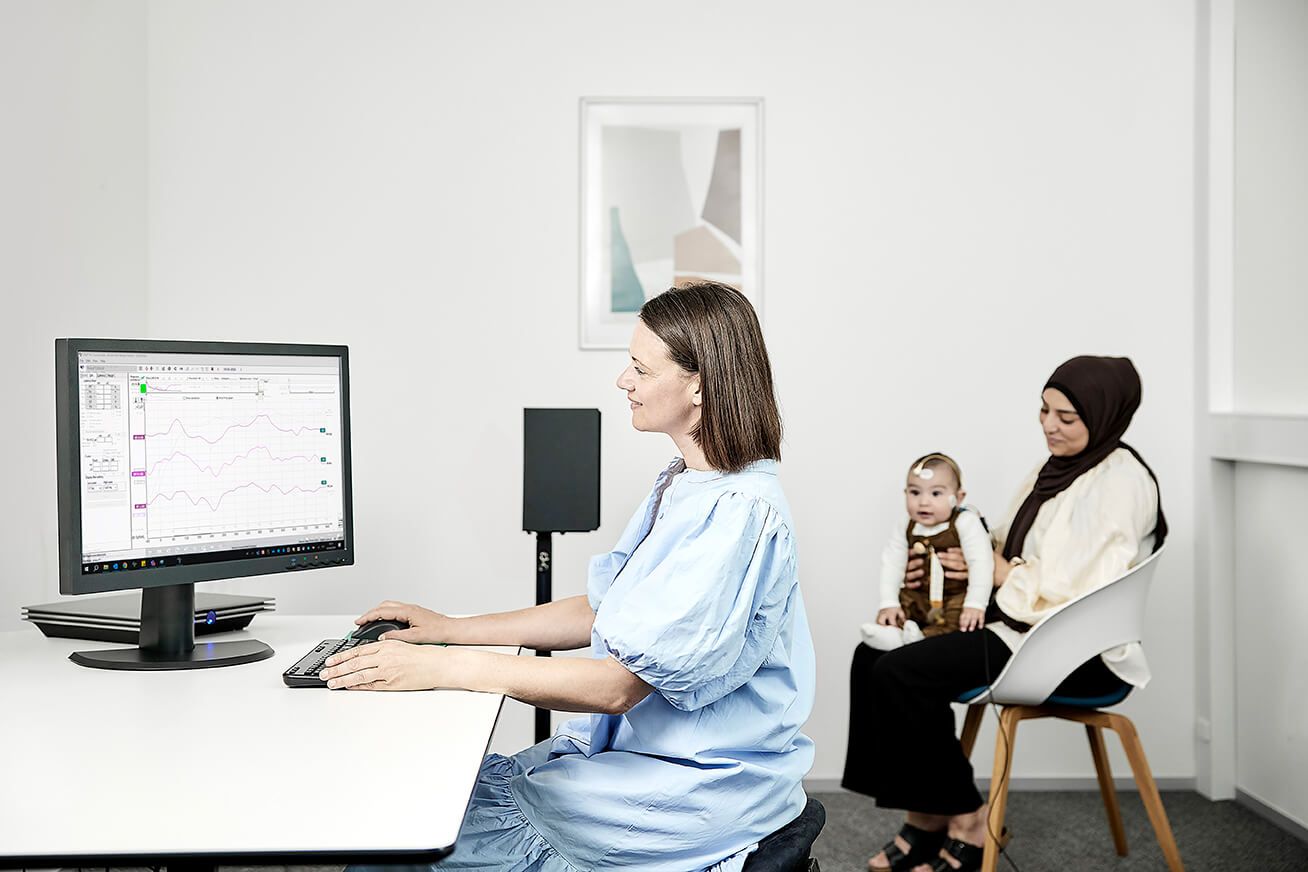
Speech-like stimuli
The aided cortical test is based on electrophysiological cortical responses and will allow you to evaluate whether the patient perceives speech-like sounds.
With the speech-like ManU-IRU stimuli and precise response detector, you get a quick and accurate tool that provides the control you need to make the right clinical decisions.
The included sound field analysis feature allows you to quickly check your sound environment and adjust the stimulus presentation accordingly.
Reassuring
You can use the aided cortical test to reassure parents or other relatives that the patient benefits from the hearing device and make informed adjustments to the hearing device if needed.
Enhance your patient's quality of life
By performing aided cortical testing, you can optimize the hearing care pathway and improve the outcome for infants and patients with complex needs who have a hearing loss.
ASSR: Where speed meets accuracy
Multi-frequency testing
The ASSR software enables 8 frequencies to be tested simultaneously to threshold in less than 20-30 minutes through the use of Narrow Band CE-Chirp® stimuli and a patented detection engine.
Full control – full speed
Cut test times in half
Save data directly to NOAH
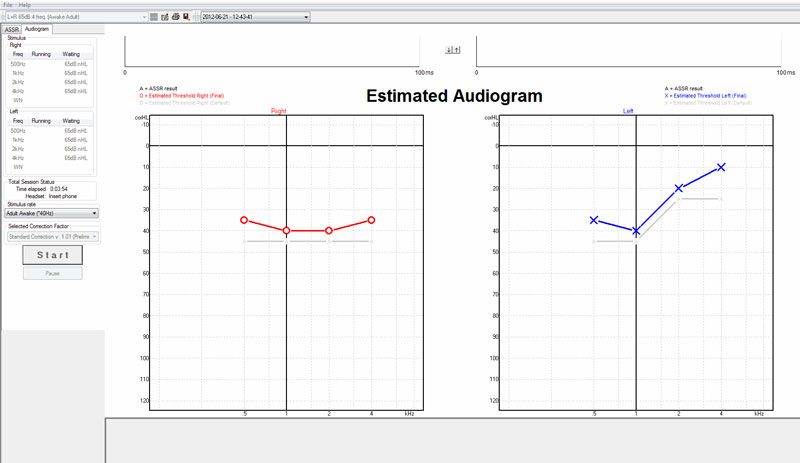
DPOAE and TEOAE
The Eclipse hardware platform accommodates both DPOAE and TEOAE testing.
- Lightweight probe with low internal noise
- Probe check indicator for correct placement
- Historic overlay for test comparison
- Test summary providing a quick overview of test results
- Protocol settings for automatic display of pass/refer results for hearing screening
- Weighted averaging improving data quality and limiting the test time
DPOAE: Distortion product otoacoustic emissions
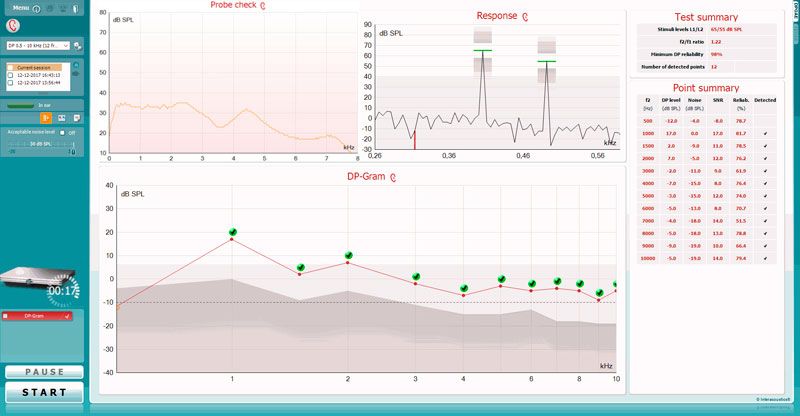
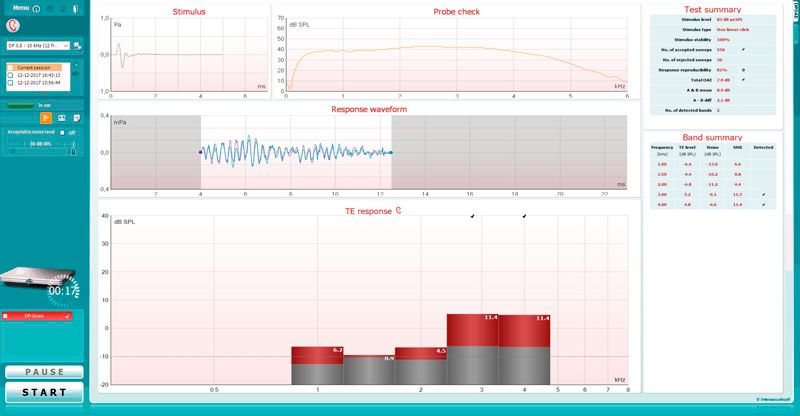
TEOAE: Transient evoked otoacoustic emissions
Optimize VEMP through visual feedback
Vestibular investigation
The Eclipse oVEMP and cVEMP tests measure and analyse the vestibular evoked myogenic potential generated by a loud stimulus.
Instant visual feedback – increased quality
Valid cVEMP results are dependent on correct and controlled EMG tonus. The VEMP software provides visual feedback of the muscle contraction to assist you in helping the patient to obtain correct muscle tonus throughout the entire test. This can be done from the software or on a separate patient monitor for cVEMP testing.
EMG-based scaling - a reliable result
High output stimuli
The Eclipse VEMP (and ABR) can stimulate up to 100 dB nHL with clicks and 110 dB nHL with 250-4000 Hz tonebursts. The B81 bone conductor can go up to 75 dB nHL with 250-4000 Hz tonebursts.
Research module option
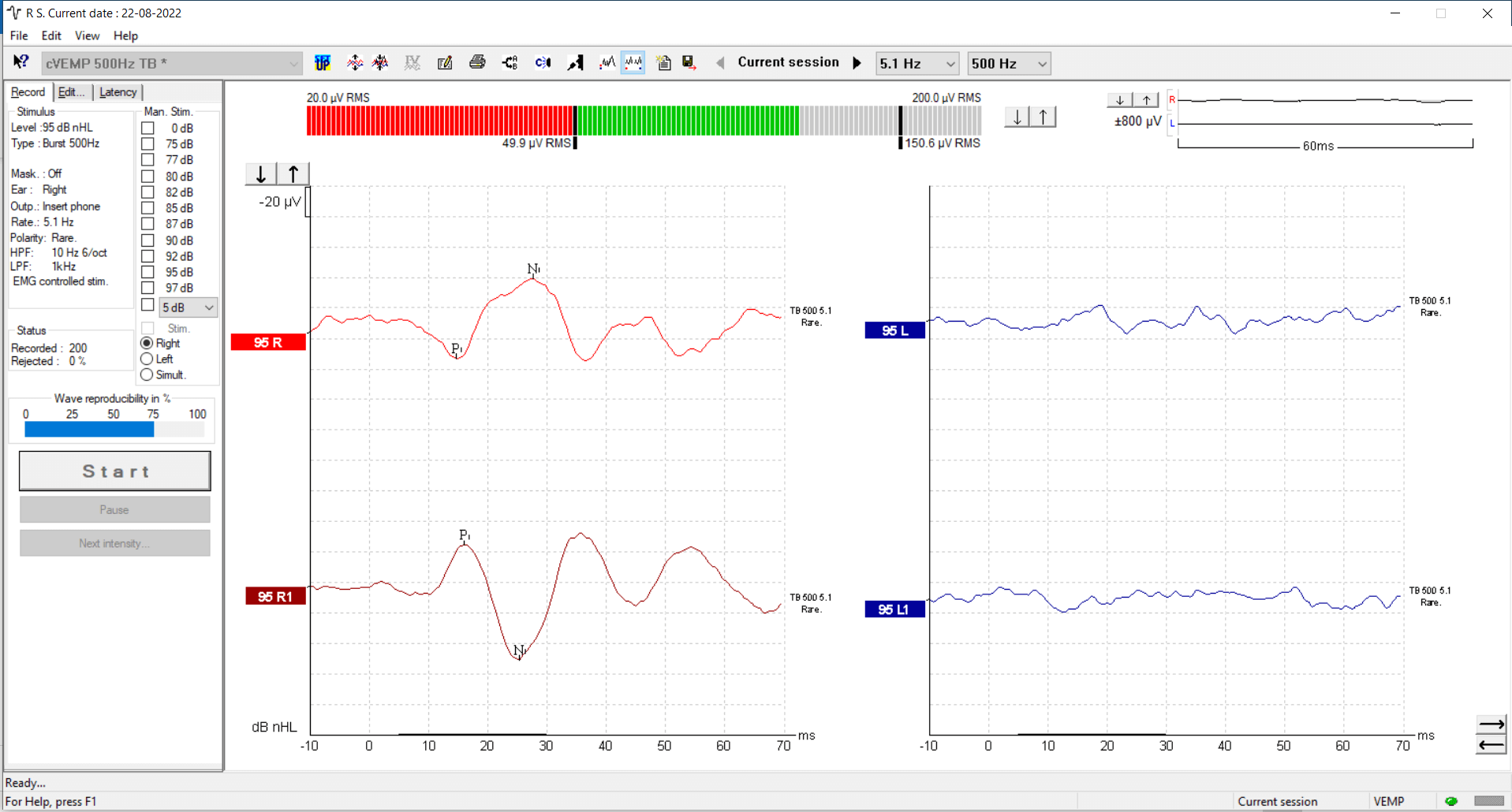

Need support or training?
Check out the latest training material for Eclipse.
